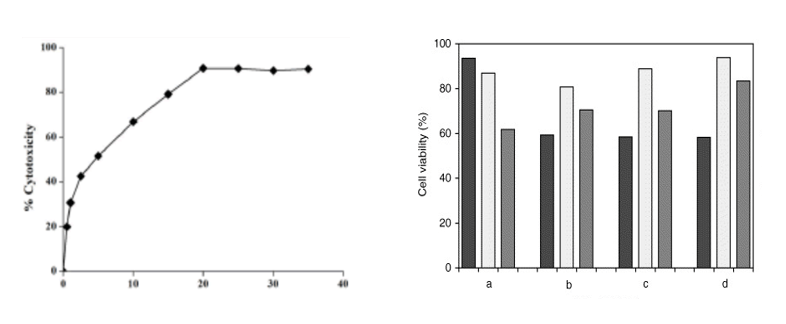- You are here: Home
- Applications
- Mucosa
- Respiratory Toxicity
Applications
-
Cell Services
- Cell Line Authentication
- Cell Surface Marker Validation Service
-
Cell Line Testing and Assays
- Toxicology Assay
- Drug-Resistant Cell Models
- Cell Viability Assays
- Cell Proliferation Assays
- Cell Migration Assays
- Soft Agar Colony Formation Assay Service
- SRB Assay
- Cell Apoptosis Assays
- Cell Cycle Assays
- Cell Angiogenesis Assays
- DNA/RNA Extraction
- Custom Cell & Tissue Lysate Service
- Cellular Phosphorylation Assays
- Stability Testing
- Sterility Testing
- Endotoxin Detection and Removal
- Phagocytosis Assays
- Cell-Based Screening and Profiling Services
- 3D-Based Services
- Custom Cell Services
- Cell-based LNP Evaluation
-
Stem Cell Research
- iPSC Generation
- iPSC Characterization
-
iPSC Differentiation
- Neural Stem Cells Differentiation Service from iPSC
- Astrocyte Differentiation Service from iPSC
- Retinal Pigment Epithelium (RPE) Differentiation Service from iPSC
- Cardiomyocyte Differentiation Service from iPSC
- T Cell, NK Cell Differentiation Service from iPSC
- Hepatocyte Differentiation Service from iPSC
- Beta Cell Differentiation Service from iPSC
- Brain Organoid Differentiation Service from iPSC
- Cardiac Organoid Differentiation Service from iPSC
- Kidney Organoid Differentiation Service from iPSC
- GABAnergic Neuron Differentiation Service from iPSC
- Undifferentiated iPSC Detection
- iPSC Gene Editing
- iPSC Expanding Service
- MSC Services
- Stem Cell Assay Development and Screening
- Cell Immortalization
-
ISH/FISH Services
- In Situ Hybridization (ISH) & RNAscope Service
- Fluorescent In Situ Hybridization
- FISH Probe Design, Synthesis and Testing Service
-
FISH Applications
- Multicolor FISH (M-FISH) Analysis
- Chromosome Analysis of ES and iPS Cells
- RNA FISH in Plant Service
- Mouse Model and PDX Analysis (FISH)
- Cell Transplantation Analysis (FISH)
- In Situ Detection of CAR-T Cells & Oncolytic Viruses
- CAR-T/CAR-NK Target Assessment Service (ISH)
- ImmunoFISH Analysis (FISH+IHC)
- Splice Variant Analysis (FISH)
- Telomere Length Analysis (Q-FISH)
- Telomere Length Analysis (qPCR assay)
- FISH Analysis of Microorganisms
- Neoplasms FISH Analysis
- CARD-FISH for Environmental Microorganisms (FISH)
- FISH Quality Control Services
- QuantiGene Plex Assay
- Circulating Tumor Cell (CTC) FISH
- mtRNA Analysis (FISH)
- In Situ Detection of Chemokines/Cytokines
- In Situ Detection of Virus
- Transgene Mapping (FISH)
- Transgene Mapping (Locus Amplification & Sequencing)
- Stable Cell Line Genetic Stability Testing
- Genetic Stability Testing (Locus Amplification & Sequencing + ddPCR)
- Clonality Analysis Service (FISH)
- Karyotyping (G-banded) Service
- Animal Chromosome Analysis (G-banded) Service
- I-FISH Service
- AAV Biodistribution Analysis (RNA ISH)
- Molecular Karyotyping (aCGH)
- Droplet Digital PCR (ddPCR) Service
- Digital ISH Image Quantification and Statistical Analysis
- SCE (Sister Chromatid Exchange) Analysis
- Biosample Services
- Histology Services
- Exosome Research Services
- In Vitro DMPK Services
-
In Vivo DMPK Services
- Pharmacokinetic and Toxicokinetic
- PK/PD Biomarker Analysis
- Bioavailability and Bioequivalence
- Bioanalytical Package
- Metabolite Profiling and Identification
- In Vivo Toxicity Study
- Mass Balance, Excretion and Expired Air Collection
- Administration Routes and Biofluid Sampling
- Quantitative Tissue Distribution
- Target Tissue Exposure
- In Vivo Blood-Brain-Barrier Assay
- Drug Toxicity Services
Respiratory Toxicity

For every breath we take, air passes through the mouth and/or nasal cavity and then through the trachea, bronchus, and bronchioles before entering lung, where gas exchange occurs. However, many inhaled toxins bypass these defense mechanisms of lung, or become activated by the metabolic enzymes, leading to pulmonary toxicity and acute injury to the lung epithelia. Proper identification of potential respiratory toxins and irritants is important to numerous industries, including chemical, personal care, and pharmaceutical industries.
Many respiratory toxicity identification methods have been established in the past, such as human research, and animal study. However, pulmonary research in humans is obviously limited due to the human and ethics issues; and for whole-animal inhalation studies, significant cost and time considerations are associated.
Nowadays, an improvement has been made by using three-dimensional (3D) human derived respiratory tissue model to predict the respiratory toxicity of compounds and chemicals. These tissues exhibits human relevant tissue structure and cellular morphology with high uniformity and reproducibility, and allows for in vitro respiratory toxicity testing of compounds such as pathogens, chemicals or therapeutics.
With over 10 years’ experience of working on cell & tissue products and services, Creative Bioarray provides in vitro airway tissue model and in vitro respiratory toxicity test to help chemical, personal care, and pharmaceutical industries to evaluate respiratory toxicity potential for their chemicals and products.
Your Needs
- You are looking for in vitro airway tissue model for your researches?
- You wish to evaluate respiratory toxicity potential for your ingredients, products or chemicals?
- You’d like to find a customized service related to respiratory toxicity?
Our Capability
In vitro 3D Models Available
- In vitro airway tissue model
- Ex vivo airway tissue model
- Respiratory cells and lung cells
- Creative Bioarray's in vitro airway tissue model could be applied to in vitro respiratory toxicity testing, it is very similar to in vivo airway mucosa in terms of morphology, of differentiation markers and of functional characteristics.
Assays available
- Cytotoxicity test: Assessment for the presence of leakage markers such as lactate dehydrogenase (LDH) or adenylate kinase (AK), two hallmark leakage markers.
- Tissue viability test: MTT assay, WST-8 assay, and ATP content assay.
- Histology assessment: Histological assessment of stained tissues is available, with focused viability determinations possible.
- Contact us about your custom evaluation requirements.
Assay Examples
 Fig.1 (a) Cytotoxicity test; (b) Tissue viability test for different chemicals by using in vitro tissue model
Fig.1 (a) Cytotoxicity test; (b) Tissue viability test for different chemicals by using in vitro tissue model
Our customer service representatives are available 24hr a day! We thank you for choosing Creative Bioarray services!
Explore Other Options
For research use only. Not for any other purpose.

